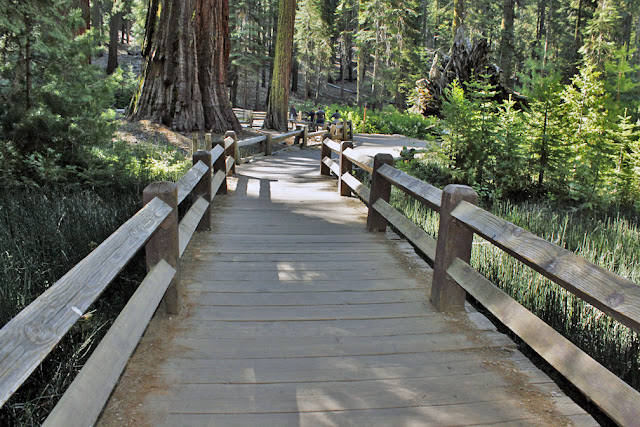Another
giant we saw was The Telescope Tree which is best viewed from inside of the
tree itself. As we walked inside and looked upward we knew how it’s got its
name. We’ve learned that this tree was hollowed out almost entirely by one of
many fires in the area and survived, and that is one more proof that Sequoia’s
has amazing resilience to fire.
We spent
some time inside the tree and saw how the outer layer is the only layer of the
tree that is growing, the center of the tree was burn away and the tree
continued living and growing for centuries longer, as long as it can still
stand up.
 The
Mariposa Grove museum was one of important stops in this tour. It was built in
1864 by Galen Clark who first saw the grove in 1857 and immediately fell in
love with its giants. He protects these trees and built the cabin to spend the
rest of his live in the grove showing off the majestic beauties to other
visitors.
The
Mariposa Grove museum was one of important stops in this tour. It was built in
1864 by Galen Clark who first saw the grove in 1857 and immediately fell in
love with its giants. He protects these trees and built the cabin to spend the
rest of his live in the grove showing off the majestic beauties to other
visitors.
Today it is
used as a museum with information on the history of the
grove and the life cycles of the giant Sequoia Trees.
There is a drinking fountain and the water is so cold and
refreshing, we spent a long minute drinking this refreshing cold water and
filled our bottles before continued on our hike.
On this hike we’ve seen so many giant sequoias and got extremely overwhelmed by what we’ve seen. No word can describe this show and we learned so much about those magnificent trees.
We saw so many trees burned by fires and learned that in fact, Sequoias need fire to survive. The warmth from the fire opens up the Sequoia’s pine cones that have fallen to the ground, along the seeds to fall out and start growing. Small fires also clear out the brush around the area, which makes it easier for the seeds to sprout. But doesn't means we should start a fire
to help the Sequoias grow—

they will do fine by
themselves relying on natural disasters, some of the trees
in this grove have been
surviving because of and
despite of them for over
2000 years.














































